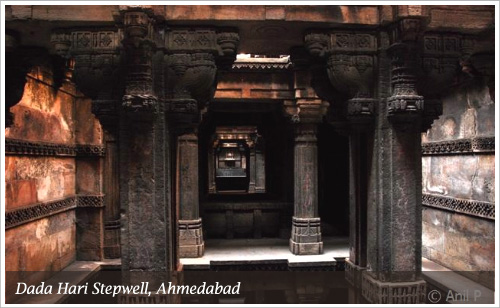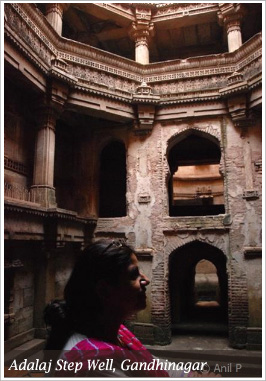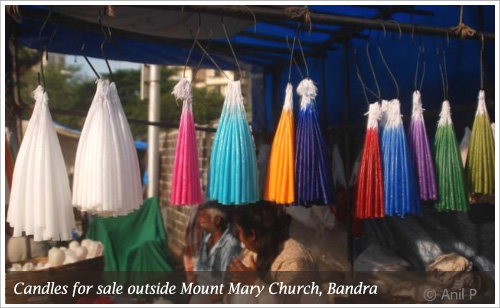Q: Architecture, History, Archeology and Wildlife are your interests. What things draw you towards them? Were you inclined to them at an early age? Would you make a career in any of these fields?
I suppose, like with most travelers, interests in the above fields are a natural consequence of the times on the road and elsewhere. While one would’ve to be lucky to be allowed into an archaeological dig like Jaggu and I were, when we headed for Ramtek where an ancient Buddhist site dating back to the Maurayan and Wakataka periods (200 B.C. and 400 A.D.) was being excavated at Mansar, climbing among the exposed stupas and those still underneath, most other instances involving India’s history, the architectural wonders that most of India’s monuments are, and its wildlife are open to any traveler seeking to make his/her acquaintance with them.
I remember beginning to get interested in the architecture of ancient India when I was visiting my uncle who was posted with Canara Bank in Laxmeshwar, off Hubli, during my vacations from school. It was a fascinating place and not the least for the Someshwara temple complex, a fine example of Chalukya architecture. Since I did not own a camera back then, I used loose paper and pen to sketch the entire temple complex while I was there, besides visiting the elaborate step wells and other intricate stone architecture about the place. I returned to Lakshmeshwar during my school vacations the next year as well, exploring more of village, home to some of very fine architectural heritage.

Talking of a step well, or baoli or vav, as step wells are known in Gujarati, I must mention the Dada Hari Vav in Ahmedabad, Gujarat. Allow me the cliché, it defies words.

And so does the one at Adalaj. Visitors thronged the Adalaj step well unlike the Dada Hari step well where I had the whole step well all to myself.
India’s architecture from the Ashoka, Gupta, Wakataka, Chalukya, Hoysala, Pandya, Chola, and later from the Lodi, and Mughal period makes for an astonishing diversity of styles, each unique to the period and the culture of the time.
Come to think of it, the sheer scale and diversity of architecture of ancient India is mind boggling, despite the concerted and sustained destruction of the same by a succession of zealous invaders of Afghan, Persian, and Turkic origin, in addition to the destruction inflicted on a smaller scale by the Portuguese. The destructive legacy of these invasions is something that visits upon the traveler at every turn across much of India.
Q: Are you also an environmentalist, or take an interest in saving a particular culture, or a species of animals/birds? If yes, what are the activities you are involved in? What suggestions would you give to save the lesser known languages from getting extinct?
Back in Goa, though infrequently, a group of us would actively campaign in matters related to the environment and wildlife either individually as in reporting and participating in checking instances of wildlife violations or as a part of a group engaged in highlighting or creating awareness about matters concerning wildlife degradation.
To save languages or dialects from dying out, it’s important to practice them. The languages and their dialects will survive only when they are used in communication. In addition, encouraging literary pursuits in those languages, and making resources available over the Internet, can help in reaching a wider audience and in helping them learn, and retain their language heritage.
Q: In a podcast with BBC Blogworld, you had mentioned about how western narratives of India are limited to the famous locations or the poverty and chaos on the roads. The lesser known places often miss their eye. What things, according to you, should the tourism industry adopt, to change this scenario? Tell us of those locations where you would take all the non-indians, that is not known to many, but can easily describe the people, culture and heart of India.
That’s entirely true. While authoritative works in the travel genre and to an extent that appearing in the travel sections of newspapers and magazines in the foreign media will look beyond the poverty and chaos on Indian roads, most times, though not after dwelling on the issues, the portrayal is more acute as in largely restricted to poverty and the chaos in individual narratives of foreign tourists appearing online in forums, blogs, and online travel networks.
That is not to say all of it is untrue, or unwarranted, it’s just that the temperament India demands of the Western visitor before it reveals itself is not something all visitors to India are blessed with, or are inclined to allow latitude for. India can be demanding of the traveler, and equally accommodating. It takes time to assimilate its dynamics.
Lack of easy access to lesser known places, a lack of adequate information facilitating access to such locations, in addition to an absence of basic infrastructure to put up tourists at such destinations, are issues the Tourism Departments at Central and state level can help solve.
Then there’s the issue concerning the first contact a visitor to India makes with personnel at the airport, and later with taxi and rickshaw fleets, followed by their place of stay before they take to buses and trains to traverse around the country. These touch points often make or break the India experience for visitors, all the more reason for the Tourism officials to ensure smooth transitioning at each interface.

Equally important is information. Information needs to be created where unavailable, collated where available, updated where it exists, and distributed on channels to reach potential visitors and as also facilitate travel for those on a visit. It means take a fresh look at India’s digital footprint for starters, identify requirements, plug gaps, and maintain it.
Lastly, appoint competent and trained personnel, including guides, officials manning Tourism offices, sites of tourist interest, and those manning the helplines. It helps nobody’s cause if appointments are merely a means to a livelihood and lack pride in India’s heritage. The need of the hour are ambassadors at every tourist touch-point.
It’s one thing to advertise India as Incredible and quite another to facilitate an incredible experience.
Q: Would you like to be called a traveler or a travel wanderer?
A meanderer would do just fine.
Q: A featured blogger at Lonely Planet and getting published in DNA for the India Book Project are some of your achievements through your blog. How do your friends and family feel about the same? Does any of your family member also have interests in travelling?
I believe a few of my friends read the blog. And maybe some relatives as well, though I cannot be certain of it, so they might know of the few things you mention.
The forthcoming book Windows In The Street to be published by Yoda Press owes a significant part of its origin to the blog, though it contains the post in expanded form and many new chapters, in addition to the constant push in completing the same by my wife, who’s invested more emotions in it than I have, more so from being a fellow traveler on most of my journeys.
My parents have traveled a lot, though maybe not for the perspectives I seek on my travels, but travel nonetheless. I travel when I find time from work. It’s more of an hobby, an excuse to be outdoors more than anything else.
Q: The videos that you post on YouTube of your travels, is a very unique concept. You also take efforts to edit the video quite nicely. How do you manage to travel, blog and also make these wonderful videos? What things do you keep in mind when capturing the essence of the place and your experience in these videos?
It isn’t a unique concept. Many bloggers do it as well. I still haven’t come around to editing much of the video and audio footage I’ve collected on my travels. The travel videos you see uploaded to my YouTube account are an extension of my blog, in the sense I thought it’d be a good idea to extend my travel experiences to account for moving images and audio for a more complete feel of the journeys undertaken.
The videos have been shot on my cellphone, and edited on the laptop using editing software available for free. All in all a very basic investment has gone into creating the travel videos.
Instinct drives the storyline when it comes to capturing the essence of a place on my travels, and could differ from traveler to traveler. Each journey offers possibilities in the realm of text, pictures, moving images, and audio. The challenge is to derive the maximum potential each possibility offers and complement the telling of a story accordingly. I’m still learning the ropes on each of the four counts.
Q: Do you promote your blog? What promotional techniques work best for you and why?
Nothing in particular.
Q: How important is it for bloggers to interact with their readers? Do you respond to all the comments that you receive?
Very important. To not respond to a comment is to show a lack of courtesy, and a lack of acknowledgement of the effort the reader put in to engage the blogger over his content. I do not believe in responding “to only those comments that deserve a response or add value”. Every comment deserves a response, and every comment adds value even if value differs in its import.
I respond to all the comments I receive on my blog, only missing out occasionally if a post in the archive is commented on that I cannot locate easily.
Q: What do you find to be the most gratifying aspect of blogging?
The opportunity to relive our travels all over again in the process of documenting them, sharing my experiences with likeminded souls, recording aspects of India that’re together uplifting, humane, awe inspiring, earthy, and reflective.
Q: How, in general, would you rate the quality of Indian blogs? Share a few of your favourite Indian blogs.
Good. Could be much better though. Indian blogosphere has a long, long way to go before it can say it’s close to fulfilling its potential.
There are many, among them who’ve been interviewed here. I’ll skip those and suggest a few others.
Q: What is your advice to someone who wants to start a blog?
Start it. Stick with it.
Q: Do you earn revenue through your blog? How does one go about it?
No, I do not, atleast not directly through advertisements, but as a spinoff from it, I do, through contributions in the mainstream media.
Q: According to you, what is the future of blogging?
Uncertain. While the critical mass it built up over the years might give way to other platforms of expression, a niche audience will always remain for the possibilities blogs offer as a medium of expression and connect.
Q: Let’s conclude off with a few favourites.
Colour: Blue
TV Show: Malgudi Days
Book: Joseph Mitchell’s The Bottom Of The Harbour.
Time Of Day: 6:00 a.m.
Your Zodiac Sign: Virgo.
Anil. this is ‘the’ longest interview at BlogAdda till now. We salute your patience and the detailing which you have put in this interview. Readers, how was the experience? Do share it with us and Anil in the comments below. For now sayonara. 🙂


Thanks for this ! Thoroughly enjoyed this interview. Wouldnt have minded a part 4. 🙂
abolutely agree with suranga!! would have loved to cotinue reading! and Anil, while you have probably explored more of Mumbai than I have, that feeling of lunch at Rama Nayak at Matunga is one I totally relate to!
Keep traveling, Keep writing. The journey continues…
hi anil, i too jst had the same glimpse of my bachpan in goa with my father in electricity dept. wow,that was great anil!!